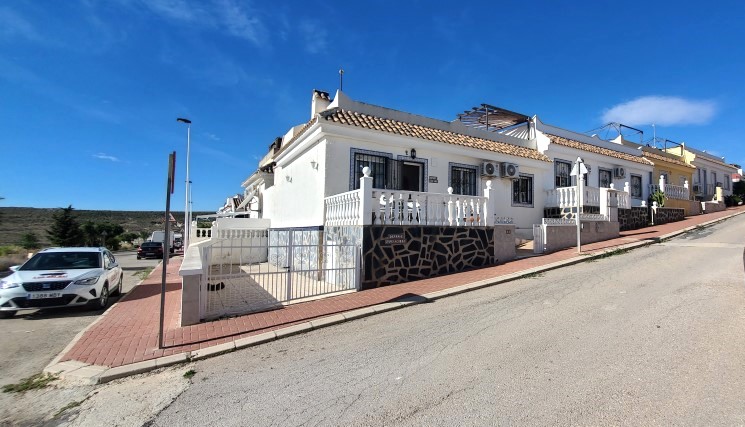Property search
Guide to Murcia City
Mazarron is set in a wide bay that opens up into the Mediterranean and has a coastline of 35 km. It has two important urban centres: the port and the town capital, five kilometers from the coast. Since its origin, the name of Mazarron has been linked to the mining wealth of its mountain ranges, which are rich in lead, zinc, silver, iron, alum and red ochre. In Phoenician, Punic and Roman times, great work was carried out in the mines, leaving behind an abundance of archaeological remains. The Arabs also settled in the area, attracted by its mineral wealth.
After the Christian Reconquest, the place known as Casas de los Alumbres de Almazarrón was formed as a consequence of the mines that were opened in the 15th century. Its strategic position turned it into a bastion of defence of the neighbouring lands of Lorca and Cartagena, proof of which may be seen in the numerous defence towers that were built to stop the Saracen advance from Africa.
As the result of its rich history, the streets of Mazarrón contain interesting monuments. Of special interest are its Town Hall and the Former Cultural Centre, which are of Modernist style and stand as indications of the splendour of the beginning of the century. Behind the Town Hall is the church of San Andrés (16th century), with a beautiful Mudejar coffered ceiling and nearby, the Convent of La Purísima (the patron saint of the town). It is also possible to visit the ruins of the Castle of the Vélez family. Out of the town, there are other towers, such as the Torre de Vieja de la Cumbre (17th century) in the port, the Tower of Los Caballos and the Tower of Santa Isabel in Bolnuevo and, on the hill of El Molinete, a watchtower with a circular layout. Besides the wealth of monuments, Mazarrón offers beautiful places which stand along the 35 km of its coastline and enjoy the protection of its 300 days of sunshine per year and average temperature of 20ºC. Opposite the Beach of Bolnuevo is one of the most spectacular landscapes of the region, where, on white sandstone, the erosion of the wind and the water has sculpted beautiful shapes, known as Bolnuevo Erosions. Beaches such as La Reya, Bahía, Nares or El Castellar and virgin coves such as Cala Amarilla, La Grúa Beach, Parazuelos, Covaticas, Ballenato, Percheles, etc., offer ideal conditions for beach and sea lovers or for those who enjoy long walks along the seashore. Mazarrón is also the ideal place for enjoying a complete range of leisure possibilities, nautical activities and active tourism. The Mazarrón marina has 200 mooring points. In its regatta club, competition is combined with courses at beginners and advanced levels. It is also possible to practise rowing, sea paragliding, water-skiing and speedboat racing. Divers can also find many clubs that organise courses at all levels together with diving expeditions to enjoy the beauty of the rocky sea bottoms, spectacular underwater caves and grottos.
Mazarrón also has a great deal to offer the rural tourist in the way of scenery and the traditions of its mining and maritime past. Its protected natural areas of Sierra de las Moreras and La Muela Cabo Tiñoso offer the chance of getting closer to nature in an area of great environmental value and interest.
The town and port of Mazarrón, on Murcia’s Costa Cálida, offer the visitor a wealth of artistic heritage and an interesting variety of leisure possibilities on the shores of the Mediterranean. The first foothills of the Sierra de la Almenara mountains, a mining area since Carthaginian times, shelter Mazarrón’s bay. More than 35 kilometres of unspoilt beaches, coves and rocky sea beds make it an ideal place to soak up the sun, do water sports and go scuba diving and try the local cuisine. In the port, around the fishing port and fish market, the traveller can get a taste of its seafaring tradition. Very close by are the defensive towers of Cumbre and Caballos. The Ciudad Encantada (enchanted city), sandstone shapes sculpted by water and wind, is another place which must not be missed. And three kilometres from the sea stands the village of Mazarrón. Outstanding from among its buildings are the Mudejar coffered ceiling of the church of San Andrés, the convent of Las Purísimas and the ruins of Castle Vélez. Economic development at the beginning of the 20th century led to the construction of emblematic modernist buildings in the Murcia region, such as Mazarrón City Hall and the Old Cultural Association.
The coastal areas of Mazarrón boast some of the finest beaches in Spain, and the generally untouched nature of the coastline and countryside appeals to those who seek a tranquil environment for their holidays. This is a popular resort for Spanish families and in the peak season (July and August) the population swells to capacity. At other times of the year it can be very quiet which makes Puerto ideal for that quiet “get away from it all” style holiday favoured by many.
The history of Puerto de Mazarron is inextricably linked with that of the parent town of Mazarrón, which has a past firmly based on mining. Although it has been popular with holidaymakers for over a century, only in recent years has the Port achieved it’s identity as one of Spain’s most attractive holiday resorts. The important commercial activities of fishing and agriculture still dominate the local economy, but the annual influx of families seeking a trouble free holiday in the sun is an important factor and of increasing importance in the area’s development.
The Paseo Maritimo This attractive promenade provides pedestrian access to the Town Beaches, and has many shops, bars, restaurants and ice-cream parlours. Traffic access is strictly regulated and the Paseo is a pleasant area to stroll at any time of the day or night.

 +34 968 199 068
+34 968 199 068 +44 845 5570920
+44 845 5570920









